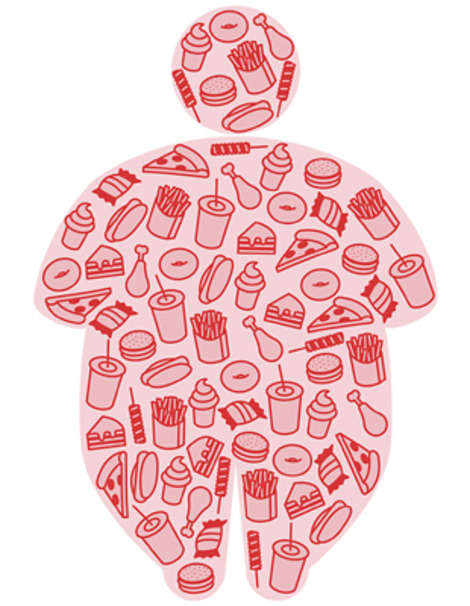Scared to Go Cold Turkey on Sugar? Start with This Ingredient

By Debbie Strong, Everyday Health
One third of adults in the United States are obese, and around the world, obesity levels are skyrocketing. Many experts argue that a major factor in this epidemic is the high amount of sugar in most Americans' diets - particularly high fructose corn syrup (HFCS), which is the first topic in a three-part documentary series for BBC World News that premiered last Friday.
The series, "The Men Who Made Us Fat," begins by investigating high fructose corn syrup's introduction in the 1970s as a cheaper, sweeter, and even healthier alternative to sugar. The government endorsed the ingredient as a way to make use of the excess corn grown by farmers, and food manufacturers quickly began adding it to processed foods and soft drinks by the dozen.
RELATED: Our Year of No Sugar: One Family's Grand Adventure
Though nutritionally speaking, high fructose corn syrup and sugar aren't much different - table sugar is 50 percent fructose and 50 percent glucose, while high fructose corn syrup is 55 percent fructose and 45 percent glucose - some experts believe that the body processes the fructose in high fructose corn syrup differently than sugar, affecting the metabolism-regulating hormones and causing the liver to release more fat into the bloodstream, leading to an increase in appetite and the body to store more fat.
One such expert is endocrinologist Robert Lustig, also featured in the documentary, who was first to warn about the dangers of high fructose corn syrup but had his findings quickly discredited at the time. Lustig is outspoken about the idea that both sugar and high fructose corn syrup are toxins - the dietary causes responsible for not just the skyrocketing number of obese Americans but also the high rates of diabetes and other illnesses. It's a tempting conclusion to draw, given that the increase in Americans' consumption of "added sugars" coincided so closely with the current obesity epidemic. Americans were consuming 75 pounds per person of added sugars per year in the 1980s, according to the United States Department of Agriculture, a time when roughly one in seven Americans was obese, almost six million were diabetic, and the obesity rates hadn't changed significantly in the 20 years prior. By the early 2000s, consumption had peaked to more than 90 pounds per person per year - and one in every three Americans was obese, and 14 million were diabetic, reported the U.S.D.A.
RELATED: Quitting Sugar Saved My Thyroid: Sarah Wilson's Story
While there's insufficient evidence to say that high fructose corn syrup is more dangerous or less healthful than other types of sweeteners, we do know that too much sugar - of any kind - can lead to increase in calories and health issues like obesity, type 2 diabetes, and heart disease. And since high fructose corn syrup is the cheapest and most abundant sweetener on the planet, it can be found in everything from pastries to tomato sauce. Here are seven easy ways to consume less:
First, be mindful. "You don't have to completely eliminate foods with high fructose corn syrup," says registered dietitian Bonnie Taub-Dix, owner of BTD Nutrition Consultants. "The problem is that there is a lot of high fructose corn syrup in foods that are otherwise worthless - they're devoid of nutrients, or don't satisfy your hunger."
Don't ignore labels. "Sometimes high fructose corn syrup is hidden in things you wouldn't suspect, like salad dressings, frozen dinners, or bread," says Taub-Dix. "Get in the habit of reading food labels."
RELATED: 7 Terrible Foods for ADHD
Look at where it appears. "If HFCS is the second ingredient on the list ingredient, I'd go look for another food. But if it's tenth on the list, it's not something to be as worried about," says Taub-Dix.
Skip the fast food lines. Fast food is loaded with HFCS - not to mention fat, salt, and empty calories. To limit your family's HFCS intake, make fast food a rare, rather than regular, part of your eating routine.
Give yourself a soda detox. Many people drink more than one can of soda a day - and soda is filled with high fructose corn syrup. Kick your daily soda kick in favor of water or seltzer with a splash of fruit juice for a far healthier, more hydrating beverage.
RELATED: Sweet Temptations: Your Brain May be the Reason for Your Sugar Cravings
Go easy on the "empty-calorie" foods. "Sweet baked goods, for instance, should be occasional treats - once or twice weekly in modest amounts," says Keith Ayoob, EdD, RD, an associate clinical professor of pediatrics at Albert Einstein College of Medicine.
Eat more produce. Of course the easiest way to ensure you're eating clean food is to avoid packaged foods entirely in favor of whole fruits and vegetables, which are proven to aid in weight loss, boost heart health, and reduce the risk for certain health conditions.
Catch Episode 2 of "The Men Who Made Us Fat," airing on BBC World News Friday, April 11 at 10:10 p.m. ET; Saturday, April 12 at 11:10 a.m. ET; Sunday, April 13 at 5:10 a.m. ET and 5:10 p.m. ET. Episode 2 investigates how the concept of "supersizing" changed our eating habits forever.
MORE ON EVERYDAY HEALTH:
What Do I Say When Friends Blame My Sister for Being Overweight?
10 Easy Ways to Improve Your Relationship With Your Doctor
Raising an Autistic Child Is Easy… Except When It's Not
Your 7-Step Spring Detox Plan
This article originally appeared on EverydayHealth.com: Is This Ingredient Making Americans Obese?
